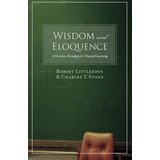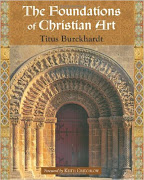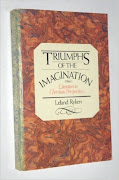I am faced with a difficult decision. After speaking with my physician yesterday about my option in regards to the ankle, and the possibility of disability of disability, I should either go to UW Madison to discuss a revision of the ankle fusion, go to Froedert to discuss ankle replacement, or continue as I am. Dr. Rosic suggested discussing the surgery before applying for disability, which he said is difficult to get now. To apply I would need to see a doctor that Social Security mandates. I would agree to that. There are risks to surgery, such as it may not solve the pain (in another fusion); it could affect the kidney, such as the first did, which is why Dr. Limoni suggests doing it in Madison; it could not heal properly, especially with the medications I take; it could lead to an infection and amputation.
Last night, in a passion, I wrote on how I want to live, while I can. It is painful to walk, but then it is painful when stationary. If it is painful, whatever I do, then I should domore than I have for the past three years. This stage has made clear to me I may not have much more time that I can endure the pain to walk, so I should live while I can. There are times to set aside all the physical and financial concerns and live. As I listen to music memories are recolleced, and the last I lived was three years ago. I consider the future, and which option will allow me to maintain, not improve, my condition, and I’ve got to gather more material before all I have are memories.
I will suffer for my actions. I will bring flowers into the office this morning. There are better, more practical purposes for the money. It will be painful to walk the grocery store to get the flowers, and to stand to put them in vases. But I will not complain because it is my choice.
Christians believe suffering serves a purpose. I don’t know. I’m going to suffer, whatever I do. The pain that results from my living serves a purpose.
ZEDS Blog
I enjoy the essays of Dafoe, Addison, and Samuel
Johnson, all of which were published in pamphlets. Pamphlets were in vogue from 1650-1800, providing writers a forum to express views on politics, society, religion, and art. This has been revived in modern times in the form of blogs.
This is now a slight revamp of my blog that started in 2008.
My reading has become a little more specialized, although previous books commented on show I was heading this direction. At this point I will review mainly Christian texts or other texts from a Christian perspective. I intend to post more regularly with book reviews.
I consider reading and writing as part of the spiritual
journey toward maturity and, I hope, wisdom. These are postings of what I’m learning along the way.
Rod Zinkel, August 19, 2015
Saturday, June 27, 2009
Thursday, June 18, 2009
The World Without Allegory
“...truth hidden in beauteous fiction.” Dante, Convivio.
In the twentieth century, and I expect the twenty-first to be a continuance, allegory was generally derided. In a century of disillusionment, of deconstruction, straightforward speech was appreciated. That is one reason I despise politics, and the worminess of those who would escape justice by ambiguity, such as by redefining words, like “the”, “a”, or “is”. In politics all words are under suspicion of allegorical or double meaning. This desire for truthful words meant disdain for figurative speech. In allegory not only the speech but the concepts are figurative.
There was a time, prior to the twentieth century, when all arts – poetry, painting, sculpture, architecture, music – were concerned with beauty. The twentieth century gave that up, for the most part. Dante’s quote reflects the usefulness of allegory – to convey truth in beauty, a statement that was prevalent five centuries later as Keats echoed the statement. But the twentieth century has no use for beauty. Any artist who still expressed the old motto was not taken seriously. Avante-gardism and novelty were the important methods, and thus became the subject of art, or rather, the art became subject to them. Beauty had grown old, irrelevant, delusional.
She still has her servants, the lineage, perhaps, of Dante, Chaucer, and Keats. They may no longer have the role in society they once had – they are the old house staff of the old lady, still not convinced that such servitude is archaic, or that we should give her the finger and proclaim our freedom by smearing her picture with dung.
In the twentieth century, and I expect the twenty-first to be a continuance, allegory was generally derided. In a century of disillusionment, of deconstruction, straightforward speech was appreciated. That is one reason I despise politics, and the worminess of those who would escape justice by ambiguity, such as by redefining words, like “the”, “a”, or “is”. In politics all words are under suspicion of allegorical or double meaning. This desire for truthful words meant disdain for figurative speech. In allegory not only the speech but the concepts are figurative.
There was a time, prior to the twentieth century, when all arts – poetry, painting, sculpture, architecture, music – were concerned with beauty. The twentieth century gave that up, for the most part. Dante’s quote reflects the usefulness of allegory – to convey truth in beauty, a statement that was prevalent five centuries later as Keats echoed the statement. But the twentieth century has no use for beauty. Any artist who still expressed the old motto was not taken seriously. Avante-gardism and novelty were the important methods, and thus became the subject of art, or rather, the art became subject to them. Beauty had grown old, irrelevant, delusional.
She still has her servants, the lineage, perhaps, of Dante, Chaucer, and Keats. They may no longer have the role in society they once had – they are the old house staff of the old lady, still not convinced that such servitude is archaic, or that we should give her the finger and proclaim our freedom by smearing her picture with dung.
Sunday, June 14, 2009
Mention of C.S. Lewis Discarded Image and Pilgrim's Regress
Quick review of The Discarded Image:
A very good introduction to medieval and Renaissance literature, constructing the Model of the Universe that was popularly held at that time. Lewis builds the Model by citing a substantial number of works that address cosmology, astronomy, medicine, rhetoric, etc. Subjects referred to by medieval authors are compiled, such as the characteristics of people described by the planet they were born under or the balance of their humours; the inhabitants of earth, aether, and the sky; daemons, angels and faeries; the separation of body and soul. A very good reference, and the beginning of a very long reading list, most of which may be found online.
Quick review of Pilgrim’s Regress:
A book that is as useful for understanding Lewis's personal experience as his autobiography, Surprised by Joy. He takes up some of the same themes, this time defining his desire for God as Romanticism, which he later calls Joy. The story is of the journey of the character John, as he searches for something to fulfill that desire for something he can't yet define. He meets a variety of characters who reflect philosophies that Lewis considered before becoming a Christian. For example, there are characters who represent Freudians, Epicureans, Classicists. Through the adventure John realizes that things such as sex, knowledge, aesthetic beauty, do not fulfill that desire.
The story is told as an allegory, modeled after John Bunyan's Pilgrim's Progress, because, as Lewis writes in the Afterword: "But in fact all good allegory exists not to hide but reveal; to make the inner world more palpable by giving it an (imagined) concrete embodiment.... For when allegory is at its best, it approaches myth, which must be grasped with the imagination, not with the intellect." (208) Nonetheless, it is engages the intellect too.
A very good introduction to medieval and Renaissance literature, constructing the Model of the Universe that was popularly held at that time. Lewis builds the Model by citing a substantial number of works that address cosmology, astronomy, medicine, rhetoric, etc. Subjects referred to by medieval authors are compiled, such as the characteristics of people described by the planet they were born under or the balance of their humours; the inhabitants of earth, aether, and the sky; daemons, angels and faeries; the separation of body and soul. A very good reference, and the beginning of a very long reading list, most of which may be found online.
Quick review of Pilgrim’s Regress:
A book that is as useful for understanding Lewis's personal experience as his autobiography, Surprised by Joy. He takes up some of the same themes, this time defining his desire for God as Romanticism, which he later calls Joy. The story is of the journey of the character John, as he searches for something to fulfill that desire for something he can't yet define. He meets a variety of characters who reflect philosophies that Lewis considered before becoming a Christian. For example, there are characters who represent Freudians, Epicureans, Classicists. Through the adventure John realizes that things such as sex, knowledge, aesthetic beauty, do not fulfill that desire.
The story is told as an allegory, modeled after John Bunyan's Pilgrim's Progress, because, as Lewis writes in the Afterword: "But in fact all good allegory exists not to hide but reveal; to make the inner world more palpable by giving it an (imagined) concrete embodiment.... For when allegory is at its best, it approaches myth, which must be grasped with the imagination, not with the intellect." (208) Nonetheless, it is engages the intellect too.
Labels:
allegory,
Christian,
literature,
medieval,
Romanticism
Saturday, June 6, 2009
Sexsim in C.S. Lewis's Pilgrim's Regress?
In Pilgrim’s Regress, a modernization of Bunyan’s Pilgrim’s Progress, C. S. Lewis portrays a few female characters, though not all, as ‘brown girls.’ These girls, portrayed as another species, like the dwarves and giants in the book, pose a problem for the character John, who is on his spiritual journey to reach the island he envisioned in a moment of joy. The first brown girl appeals to him in a way he has not experienced before. They have sex, and for every time they have sex, another brown girl is born. The book is allegorical, like Bunyan’s work. The brown girls come to represent his guilt. The first girl now tries to make him settle down and take care of the family, to ignore his vision of the island. Still he sets out to find it. There are a few more times he is tempted by brown girls, even some he does not recognize as such, always to settle with what they have, because the island isn’t real, and this sensuous experience is. More than once he hears the girl say, “I’m what you’re looking for.”
Lewis’s purpose must be kept in mind. He, or rather his characters, realize that lust, love of the body, imitates love of the spirit. In his book, The Four Loves, Lewis categorizes these two different kinds of love as “Eros” and “Agape,” the first for the opposite sex, the second for God. In Pilgrim’s Regress, the protagonist realizes Eros, (what I prefer to call romantic love), is not the fulfillment of his desire for the heavenly. He finds sex enjoyable, even ecstatic initially, but it is not what he desired.... (Continued in ZEDS e-newsletter.)
The argument he makes that romantic love is the lesser substitute for agape love is important and still relevant. It is not just a medieval concept. It still justifies warning. Lewis notes just how prevalent this idea and practice of idealizing romantic love has become in his book, Allegory of Love. In the commentary on allegorical literature, he notes how influential works like the Romance of the Rose was on medieval thought and thereafter. From the antiquities of Greek and Roman writers until the Middle Ages romantic love was seldom written of, and certainly not central to literature. After the late medieval period, with the works of Dante, Boccaccio, and Chaucer, literature is preoccupied with romantic love. Few authors in that time conceive of agape love, in comparison. It is true to this day. In the age of Hollywood romantic love is consistently shown as the highest man can experience, and sex is the equivalent to Holy Communion, only it’s become so common it’s more like grabbing a quick bite to eat in the car. And it’s recognized as the false substitute for the soul by real life experience.
C. S. Lewis, The Pilgrim’s Regress, (New York: Eerdman’s Publishing Co. 1981).
Lewis’s purpose must be kept in mind. He, or rather his characters, realize that lust, love of the body, imitates love of the spirit. In his book, The Four Loves, Lewis categorizes these two different kinds of love as “Eros” and “Agape,” the first for the opposite sex, the second for God. In Pilgrim’s Regress, the protagonist realizes Eros, (what I prefer to call romantic love), is not the fulfillment of his desire for the heavenly. He finds sex enjoyable, even ecstatic initially, but it is not what he desired.... (Continued in ZEDS e-newsletter.)
The argument he makes that romantic love is the lesser substitute for agape love is important and still relevant. It is not just a medieval concept. It still justifies warning. Lewis notes just how prevalent this idea and practice of idealizing romantic love has become in his book, Allegory of Love. In the commentary on allegorical literature, he notes how influential works like the Romance of the Rose was on medieval thought and thereafter. From the antiquities of Greek and Roman writers until the Middle Ages romantic love was seldom written of, and certainly not central to literature. After the late medieval period, with the works of Dante, Boccaccio, and Chaucer, literature is preoccupied with romantic love. Few authors in that time conceive of agape love, in comparison. It is true to this day. In the age of Hollywood romantic love is consistently shown as the highest man can experience, and sex is the equivalent to Holy Communion, only it’s become so common it’s more like grabbing a quick bite to eat in the car. And it’s recognized as the false substitute for the soul by real life experience.
C. S. Lewis, The Pilgrim’s Regress, (New York: Eerdman’s Publishing Co. 1981).
Subscribe to:
Posts (Atom)
Calendar
Chapbook: Two Natures
The Neville Museum series has published a chapbook of 15 of my poems. They are of human and spiritual natures. Here are two poems from the book:
Two Natures
On still water of the pond
two natures you may notice--
where scum has been gathering,
there also grows the lotus.
One Way
There's a boy
who stands knee-high
to a July cornstalk.
He stares one way
down the dirt road
his mother has gone.
He find Fortune
has desrted him,
like the poverty-stricken,
society-forbidden parent.
"I can't take care of you," she said.
I am the child who mirrors
his mother's tears without knowing why?
Two Natures
On still water of the pond
two natures you may notice--
where scum has been gathering,
there also grows the lotus.
One Way
There's a boy
who stands knee-high
to a July cornstalk.
He stares one way
down the dirt road
his mother has gone.
He find Fortune
has desrted him,
like the poverty-stricken,
society-forbidden parent.
"I can't take care of you," she said.
I am the child who mirrors
his mother's tears without knowing why?






